

Food Security in China
The State Council Information Office of the People’s Republic of China
I. China’s Achievements in Ensuring Food Security
With one fifth of the world population, China accounts for a quarter of total global food production. China is self-reliant in securing its own food supply; its people now have not only enough to eat, but also a greater range of choices. Compared to past times when they were underfed, this historical change has been made possible by the Chinese themselves through hard work and development. It is also a key contribution to world food security.
1. Steady growth in food output
– Per capita food output remains above the world average. Currently China’s per capita food output is around 470 kg, growing by 14 percent from 414 kg since 1996 when China published its first white paper on food – The Grain Issue in China, and by 126 percent from 209 kg in 1949, when the PRC was founded. This is higher than the world average.
– Per unit yield has significantly increased. The average food yield per hectare is as follows:
• more than 5,000 kg in 2010;
• 5,621 kg in 2018, an increase of 1,138 kg, or 25 percent, over 1996.
– The yields per hectare for rice, wheat and corn in 2017 are as follows:
• 6,916.9 kg, up 11.3 percent over 1996, 50.1 percent higher than the world average;
• 5,481.2 kg, up 46.8 percent over 1996, 55.2 percent higher than the world average;
• 6,110.3 kg, up 17.4 percent over 1996, 6.2 percent higher than the world average.
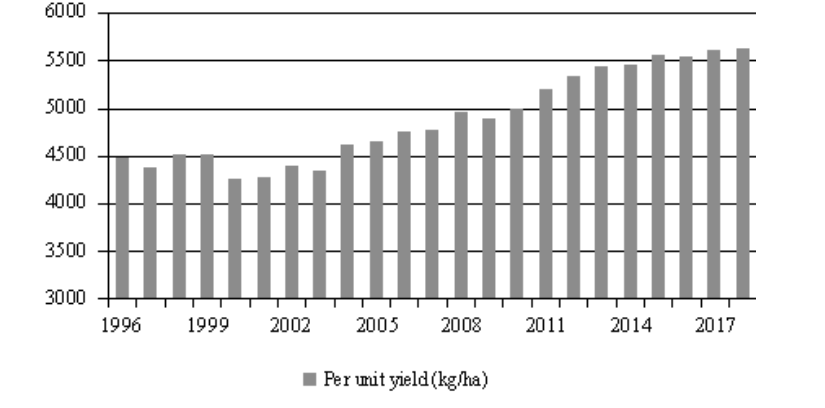
Figure 1. Per unit food output in China(1996-2018)
Source: National Bureau of Statistics
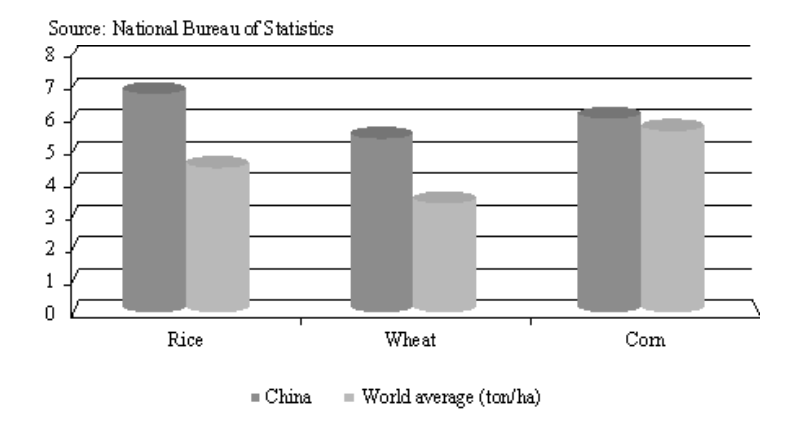
Figure 2. Per unit yields of three major grain crops in 2017
Source: SAOSTAT
– Total food output has seen a steady increase. China’s total food output surpassed
• 550 million tons in 2010,
• 600 million tons in 2012,
• 660 million tons in 2015,
• 650 million tons for four years from 2015.
In 2018 the figure was near 660 million tons, up 30 percent over 1996 (500 million tons), the year China published its first white paper on food security, 116 percent over 1978 (300 million tons), the year of the launch of China’s reform and opening up, and by nearly 600 percent over 1949 (110 million tons), the year the PRC was founded.
Over the years food output each year has fluctuated within a range of ±6 percent, with the exception of a few years.
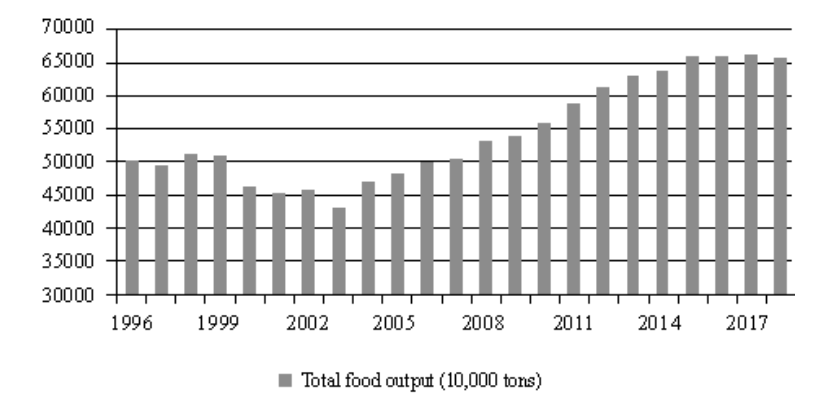
Figure 3. China’s total food output (1996-2018)
Source: National Bureau of Statistics
2. Self-sufficiency in grain supply
– China is self-sufficient in grain supply. In 2018 the grain output was 610 million tons, accounting for more than 90 percent of total food output, and growing by 160 million tons over 1996. Currently China supplies 95 percent of its own needs for grain, laying down a solid material foundation for maintaining national food security, promoting socioeconomic development, and safeguarding long-term peace and stability.
– China ensures absolute security of staple grains. In 2001-2018, soybean accounted for 75.4 percent of imported grains, and the two main staple grains of rice and wheat together accounted for less than 6 percent. In recent years, with rice and wheat output meeting domestic needs, China is fully self-sufficient in food supply, and the main driver of food imports and exports is to satisfy the need for variety. China makes sure it relies on itself for food supply.
3. Greater food reserve capacity
– Food storage is further modernized. In 2018 the storage capacity of qualified grain warehouses was 670 million tons, and that of simple warehouses was 240 million tons. Total effective warehouse capacity grew by 31.9 percent over 1996. The total tank capacity for edible oils was 28 million tons, a seven-fold increase over 1996. China has built new modern grain storage facilities and renovated old ones, further increasing storage capacity. With the facilities’ functions also improved, China has secured a continued increase in its food storage capacity, generally reaching world advanced levels.
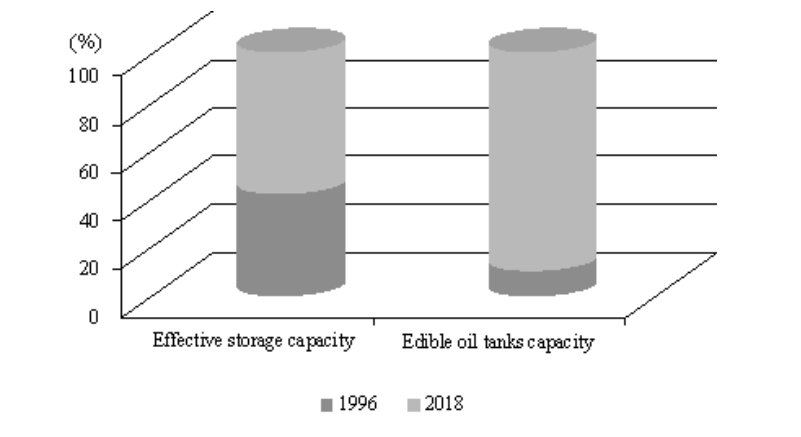
Figure 4. Growth in effective storage capacity and edible oil tanks capacity
Source: Natioal Food and Strategic Reserves Administration
– Logistics capacity has increased markedly. In 2017, the total volume of food transported reached 480 million tons, including 230 million tons of interprovincial transport. All major channels of food logistics have been integrated to form a multimodal transport network composed of highways, railways and waterways. Food logistics now involves more unprocessed grain, bulk grain, and finished grain products transported by container. The efficiency of food logistics has seen steady improvement.
– Grain reserves and emergency response systems are improving. The government has sufficient and quality food reserves, with secured storage. Emergency food reserves for 10-15 days are available in large and medium-sized cities and areas prone to price fluctuation. A network of emergency reserves, processing and distribution is in place, with outlets to supply sub-districts and communities in urban and rural areas. These play an important role in response to natural disasters such as earthquakes, sleet, snowstorms, and typhoons, as well as public emergencies.
4. Improved nutrition for residents
– More choices for meals. Per capita shares of various foods in 2018 and their increase over 1996 are as follows:
• oil, 24.7 kg, growing by 6.5 kg (35.7 percent up);
• pork, beef and mutton, 46.8 kg, growing by 16.6 kg (55 percent up);
• aquatic products, 46.4 kg, growing by 19.5 kg (72.5 percent up);
• milk, 22.1 kg, growing by 17 kg (333.3 percent up);
• vegetables, 505.1 kg, growing by 257.7 kg (104.2 percent up); and
• fruits, 184.4 kg, growing by 117.7 kg (176.5 percent up).
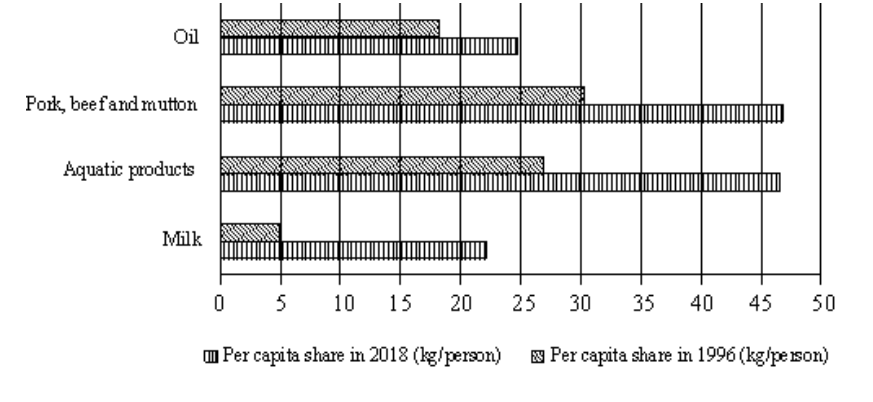
Figure 5. Per Capita Shares of oil; pork, beef and mutton; aquatic products; and milk
Source: National Bureau of Statistics
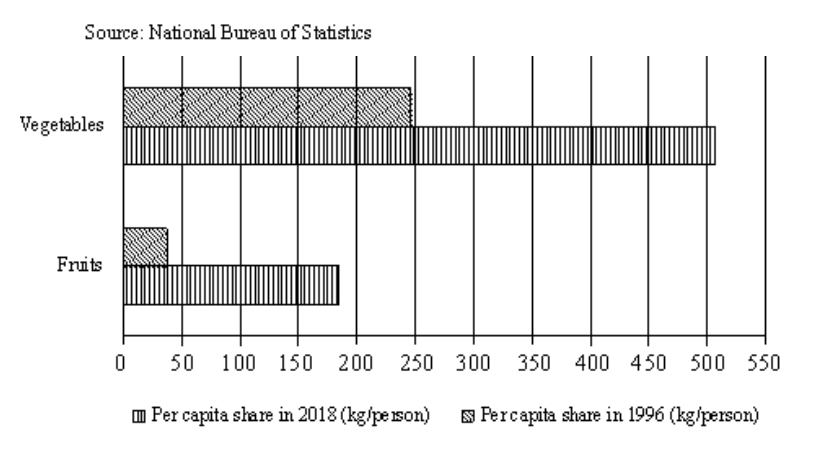
Figure 6. Per Capita Shares of vegetables and fruits
Source: National Bureau of Statistics
The per capita direct consumption of staple grains has decreased, and the consumption of non-grain foods such as meat and fish, ligneous foods, vegetables, and fruits has increased. The Chinese have more choices in what they eat and have a healthier diet.
– Improved nutrition. Data from the National Health Commission shows that the average daily energy intake of a standard person in China is 2,172 kcal, and the intakes of protein, fat and carbohydrate are 65g, 80g and 301g. Chinese citizens have an adequate supply of dietary energy, with sufficient intake of the three major nutrients – proteins, fat and carbohydrates. The proportion of carbohydrate intake has fallen, and those of fat and quality protein intake have risen.
5. Food for the poor
– Poor people in China no longer need to worry about food. The Chinese government has always attached great importance to eliminating hunger and poverty. Since the 18th National Congress of the CPC, in particular, it has explored ways to develop the rural economy, increase farmers’ incomes, and eliminate hunger and poverty. Remarkable results have been achieved in targeted poverty alleviation and eradication. According to China’s current poverty standards, as of the end of 2018 there remained 16.6 million people living in poverty in China. This represented a reduction of 82.39 million compared to 2012, and the incidence of poverty was down from 10.2 percent to 1.7 percent. The government has helped 750 million people out of poverty since 1978, when a staggering 770 million people were struggling for the means to live. According to the World Bank’s poverty line of 1.9 US dollars per person per day, China has contributed more than 70 percent of the global poverty reduction effort. China has lifted more people out of poverty than any other country, and is the first country to reach the poverty reduction goal in the UN’s Millennium Development Goals.
– Nutrition for key groups in poverty has improved markedly. In 2018 the per capita disposable income of residents in impoverished rural areas reached 10,371 yuan, an actual increase of 1.7 percentage points higher than that of rural areas in general. This increase in income has enabled poor areas to acquire more food, and the intake of grains among poor groups has grown steadily. The government has carried out extensive nutrition improvement programs in poor areas for young students, infants, children, pregnant women, and the elderly, as a result of which there have been noticeable improvements in their nutrition and health.
II. Food Security in China
Based on its own national conditions and food availability, China has embarked on a road to establishing food security in its own way by implementing the concepts of innovative, coordinated, green, open, and inclusive development, the requirements of high-quality development, and a national food security strategy for a new era.
1. Steadily increasing grain production capacity
– Never crossing the red line for the protection of cultivated land. The Chinese government has implemented an overall plan for land use throughout the country. It strictly controls the occupation of cultivated land, especially high-quality land. It is improving the mechanism for linking the increase and deposit of construction land, and implementing a policy of balancing the occupation and replenishment of arable land, thus drawing a red line for its 120 million hectares of cultivated land. We have implemented a complete and special protection system for permanent basic farmland, and designated more than 103 million hectares of permanent basic farmland. At present, the country has 134.88 million hectares of cultivated land, an increase of more than 4.8 million hectares over 1996. There are more than 117 million hectares sown with grain, an increase of about 4.5 million hectares over 1996. The foundations of grain production have been strengthened.
– Improving the quality of arable land and protecting the environment. China has implemented an overall plan for the development of high-standard farmland, promoted the protection of quantity, quality and ecology of cultivated land, and upgraded medium- and low-yield fields. It has built high-standard farmland with concentrated contiguous land, guaranteed harvests in drought or flood, stable and high yield, and a sound ecology. Since 2011, we have created more than 42.6 million hectares of high-standard farmland, improved the quality of cultivated land by 1 to 2 grades in related zones, increased grain production by about 1,500 kg per hectare, and increased grain production capacity. We have carried out soil testing and formula fertilization, popularized the practice of returning straw to the field, green manure planting, the application of organic fertilizer, soil improvement and other supporting technologies, and steadily improved the quality of cultivated land. We have also implemented cultivated land rehabilitation planning and carried out a pilot system of fallow rotation of cultivated land. We will continue to control the application of chemical fertilizers and pesticides, gradually eliminate non-point source pollution, and protect the environment.
– Establishing functional areas for grain production and protected areas for the production of important agricultural products. In accordance with the planning of the main functional areas and the configuration of superior agricultural products, China has established functional areas for grain production and protected areas for important agricultural products on the basis of permanent basic farmland. We have designated 60 million hectares of functional areas for grain production, such as rice, wheat and corn, and nearly 15 million hectares of protected areas for the production of important agricultural products such as soybeans and rapeseed. We have strengthened the superior industrial belt of rice, corn and soybeans in Northeast China, and formed a dominant area for the large-scale production of wheat, special corn and high-protein soybeans on the North China Plain. We are building a core area for the production of double-cropping rice and high-quality special wheat in the Yangtze River Economic Belt, and we are expanding the scale and improving the quality of high-quality wheat, corn and potatoes in Northwest China. In Southwest China we are focusing on the cultivation of rice, wheat, corn and potatoes, and increasing the yield of high-quality double-cropping rice and potatoes in Southeast and South China. We will continue to optimize the regional configuration and the combination of production factors, promote agricultural restructuring, enhance the quality and efficiency of agricultural products and market competitiveness, and ensure the effective supply of important agricultural products, especially grain.
2. Cultivating and arousing the enthusiasm of grain planting
– Guaranteeing farming incomes. Grain production makes an essential contribution to feeding the people; it also provides employment to farmers. China has a huge agricultural population, and it will be a gradual process to reduce the agricultural population through urbanization, during the course of which the employment and income of farmers must be guaranteed. In order to develop the rural economy and society in an all-round way, China has abolished the animal husbandry tax, pig slaughtering tax, tax on agricultural and forestry specialties and other taxes, especially the agricultural tax, which had existed in China for 2,600 years and was abolished in 2006. All these efforts have fundamentally reduced the burden on farmers.
We will gradually adjust and improve the grain price formation mechanism and agricultural support and protection policies, and improve farmers’ ability to resist natural and market risks through the implementation of land fertility protection subsidies for cultivated land and subsidies for the purchase of agricultural machinery and equipment. We will guarantee the basic income of farmers, cultivate their enthusiasm for growing grain, and ensure the sustainable development of agriculture.
– Improving the mode of production and operation. China has consolidated the basic management system in rural areas, adhered to a two-tier management system based on household contract management and combined with unification and division, and aroused the enthusiasm of hundreds of millions of farmers in grain production. We have invested a great effort in cultivating new-type agricultural business entities and socialized service organizations, promoted moderate-scale operations, and guided small-scale farmers onto the track of modern agriculture, gradually forming a three-dimensional compound agricultural management system based on family management, with cooperation as the link, and social services as the support. At present there are nearly 600,000 family farms, 2.17 million farmers’ cooperatives, and 370,000 social service organizations in China. The problems of “who farms the land” and “how to farm the land” have been effectively solved, and the efficiency of agricultural production has significantly improved.
3. Innovating and improving the food market system
– Building a pattern of multiple market players. China is furthering reform of state-owned grain enterprises, encouraging the development of a mixed ownership economy, promoting cross-regional integration of state-owned grain enterprises, and creating backbone grain enterprise groups. We will transform and upgrade the grain industry, cultivate large transnational grain groups, support the development of small and medium-sized grain enterprises, and foster a market environment for fair competition. We have actively guided multiple players into the market, and the proportion of market-based procurement has been increasing. A network of diversified grain purchasers has gradually taken shape.
– Improving the grain trading system. China has built a standardized and unified national electronic grain trading platform, forming a national grain trading system with the platform as the center and provincial (autonomous regional, municipal) grain trading platforms as the support. The functions of macro-control and grain circulation have continuously improved. There are more than 500 grain commodity and logistics markets across the country. Grain futures trading cover major grain varieties such as wheat, corn, rice, and soybeans, and the scale is expanding.
– Steadily improving services in the grain market. The government has actively guided various localities to develop a variety of grain retail methods, and improved the supply network of “safe grain and oil” in urban and rural areas. Grain e-commerce and new forms of retail business are in good shape. We are building platforms for cooperation in grain production and marketing, and encouraging production and marketing areas to strengthen strategic cooperation at government level. In 2018, we organized 3,935 grain fairs of all kinds, with a transaction volume of nearly 136.27 million tons and a value of 231.9 billion yuan. In 2018 and 2019, China held China Grain Trade Conferences with an intended purchase and sale of more than 60 million tons, pushing grain production and marketing cooperation to a new level.
Edited by Bao Lianying
with reference to <www.scio.gov.cn/zfbps/32832/Document/1666228/1666228.htm>